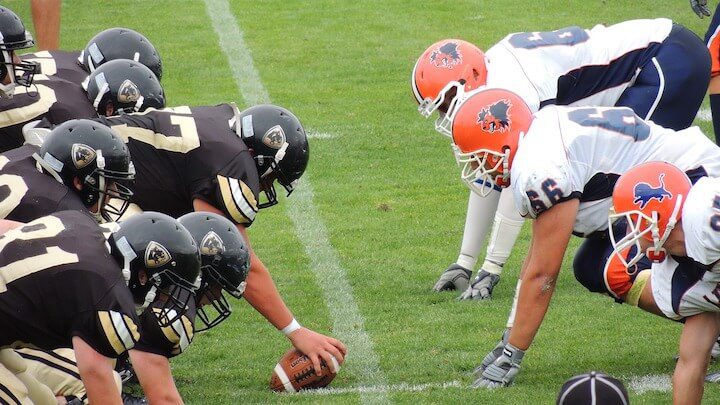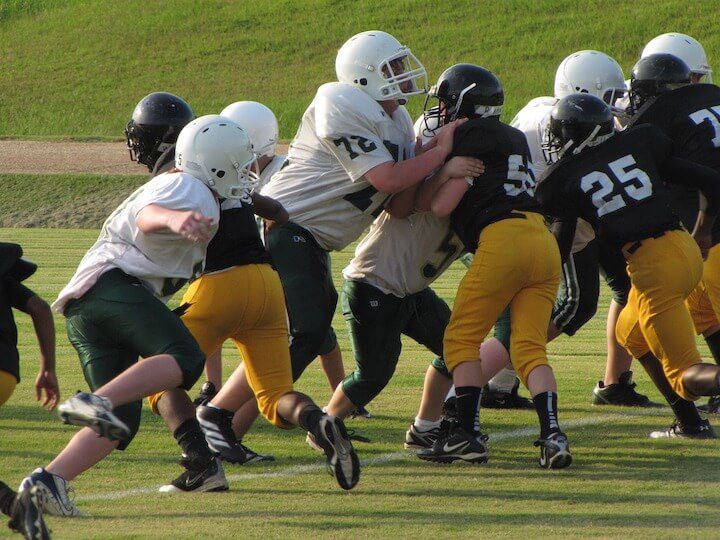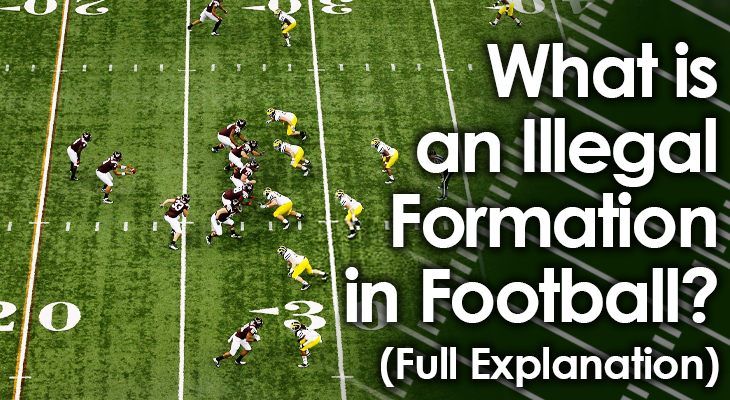60 or so years ago, football teams focused primarily on running the ball, employing bigger players who could physically overpower their defensive counterparts.
Then as players increased their skills, coaches began to open up the game and incorporate more passing plays into the scheme.
Over the years, offensive coaches have constantly innovated to stay one step ahead of defenses -- and to take advantage of speedier and stronger players at every position.
That's resulted in teams utilizing many creative offensive formations that look a lot different than the ones you would have seen in the 1960s.
While all of these new formations employ creative uses of players, they all must abide by the basic formation rules in football.
If they don't, they'll get called for an illegal formation penalty.
But what constitutes an illegal formation, and how can offensive coaches and players avoid being called for such a penalty?
Let's discuss.
What is an Illegal Formation in Football?
No matter what type of offense a team wants to employ, it must follow the basic formation rules.
The rules of the game put in place regulations that all offenses must follow when they set up at the line of scrimmage before a play.
If even one player doesn’t abide by the rules, the offense will get called for an illegal formation penalty.
Whether a formation is legal or not depends on how many players line up at the actual line of scrimmage ("LOS").
Football rules dictate that at least seven of the 11 players on offense must line up at the LOS for every play.
The other four players can line up off the LOS and/or in the backfield.
Where Offensive Players Typically Line Up
Of the seven players who must line up at the LOS, five are the standard offensive linemen.
- One center
- Two offensive guards
- Two offensive tackles
That leaves two more players who must line up at the LOS to start a play.
Offensive coaches then have the freedom to choose who these players are. In most cases, it will be some combination of tight ends and wide receivers. These players can be split out wide of the interior formation, as long as they are lined up at the LOS.
That leaves four players who are allowed to line up off the LOS.
One will almost always be the quarterback, who lines up either under center or in shotgun formation.
The other three players are typically some combination of running backs and wide receivers.
Again, these players can line up anywhere on the field width-wise as long as they are not at the actual LOS.

Adjusting the Formation Before the Snap
Many offensive coaches will call for pre-snap motion to keep the defense guessing and force them to make adjustments before the play begins.
When this happens, coaches have the ability to shift who's lined up at the LOS and who isn't.
For instance, an X receiver lined up at the LOS can drop back and go in pre-snap motion from one side of the field to the next. He can even stay off the LOS at the snap.
For this to be a legal formation, though, another player (typically a slot receiver) must step up to the LOS when the X starts his motion.
This will ensure that seven players are at the LOS at the snap of the ball.
The Penalty for Illegal Formation
The referees will call a penalty when they determine that the offense is in an illegal formation.
This happens almost exclusively when not enough players line up at the LOS at the time of the snap.
When a referee throws a flag for this infraction, the offense will receive a five yard penalty from the previous spot.
Whatever occurs during the play is essentially negated by the penalty.
The defense does have the opportunity to decline the penalty, though, if the result of the play would be more advantageous to them.
This might happen if the play resulted in a turnover, or if the offense would likely punt on the next play.
How an Illegal Formation Penalty Occurs
There are two common ways that an illegal formation penalty will occur.
1. When an offensive lineman lines up off the line of scrimmage
Offensive tackles are often guilty of this.
On pass plays, they may try to cheat back off the LOS a bit to get an extra step on speedy outside defensive rushers. Sometimes, they line up too far off the LOS, though.
2. When a player who should be at the LOS lines up too far back
This typically happens when a tight end or wide receiver who's supposed to be at the LOS ends up too far back when the snap occurs.
Coaches teach receivers and tight ends to check with the line referee as they line up to ensure they are at the LOS.
The referee will then tell them that they are good, or that they need to move up.
If the receiver or tight end doesn't check in with the ref first, or doesn’t adjust their position, they might not be at the LOS properly.

Conclusion
All offenses must abide by the rules and regulations of legal formations in football, no matter what creative formation come up with in the film room.
If they don't, they will get called for an illegal formation penalty, which will result in a loss of five yards.
Illegal formation penalties are easy to avoid, so teach your players exactly how they must line up before each play.

